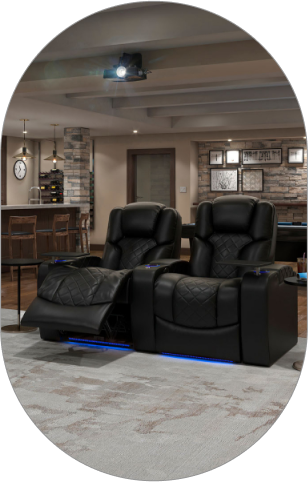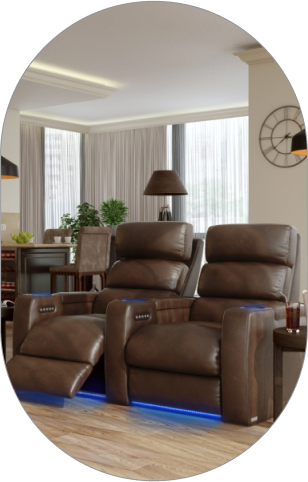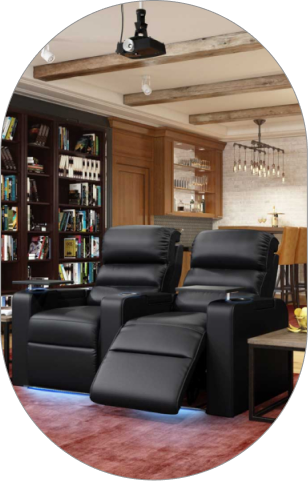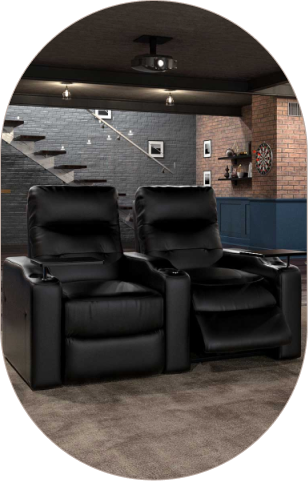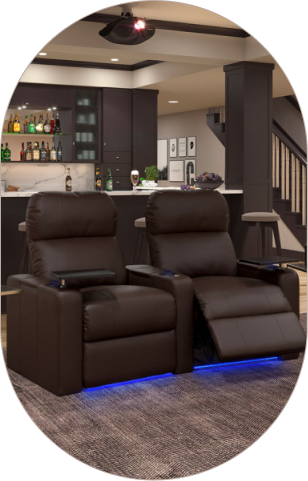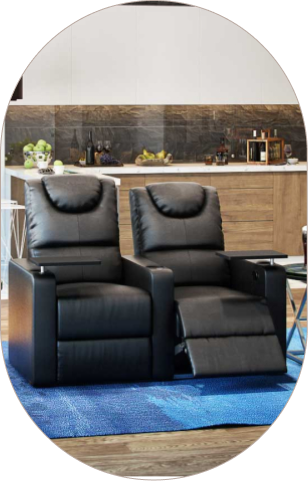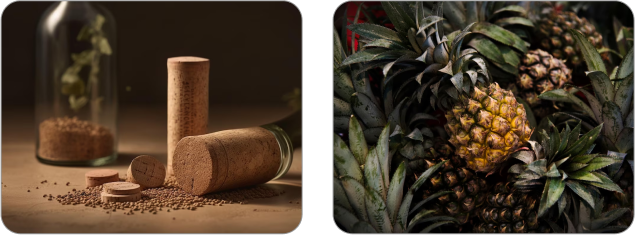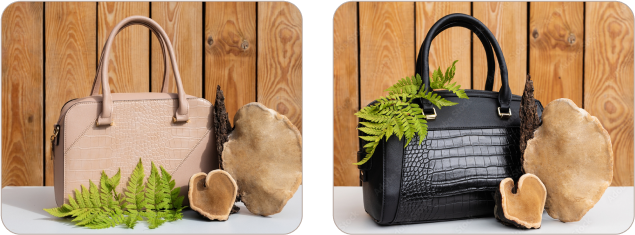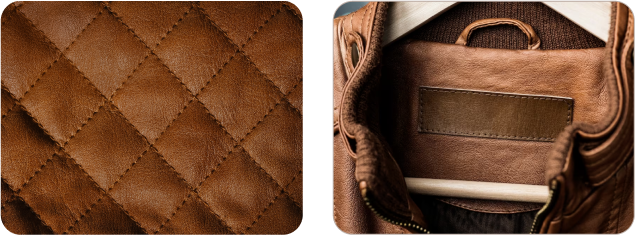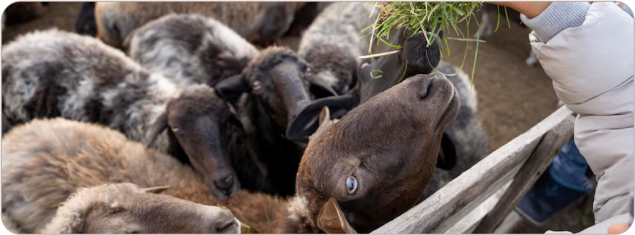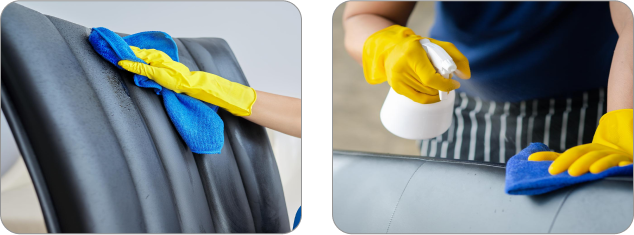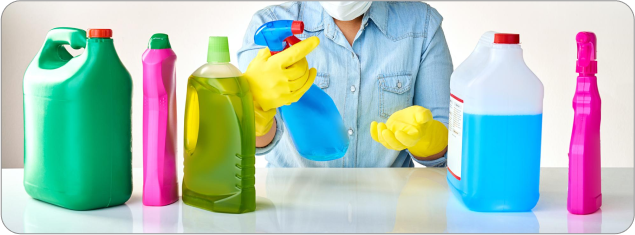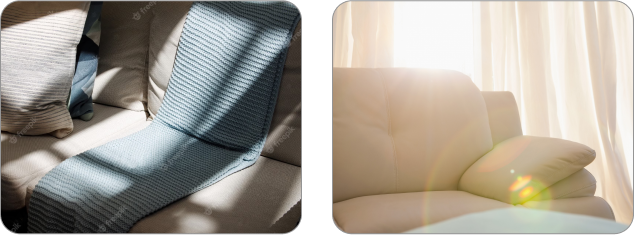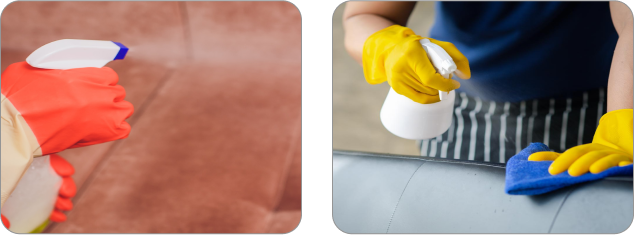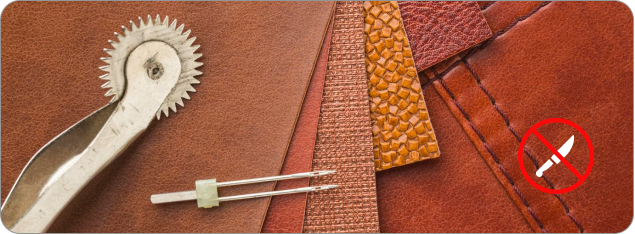All About
Vegan Leather
Sustainability is at the forefront of our minds and has been a driving force in fashion trends over the past few years.
This sustainable mindset has seen vegan leather become increasingly popular, with the synthetic material used to replicate genuine leather in the likes of shoes, belts, cars, clothes, and even furniture.

In this article,
we will explore the benefits of using vegan leather instead of the real thing and if this has a significant environmental impact while shedding light on the ethical implications of using animal-derived products in fashion.
What is
Vegan Leather?
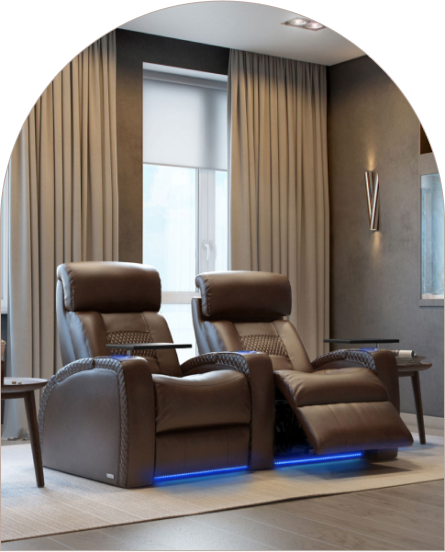
Genuine leather is often made from the skins of animals, such as cows, pigs, and sheep.
Vegan leather (also referred to as faux leather) doesn’t use animal-derived products in its manufacturing. Instead, it uses synthetic material to replicate traditional, real leather’s feel, look, and texture.
Veganism refers to pursuing a lifestyle that doesn’t harm animals by not consuming or using products that inflict harm.
Vegan leather isn’t a black-and-white subject, and products that are kind to animals aren’t always necessarily kind to our planet, which can make the art of being sustainable somewhat challenging.
With that being said, multiple types of materials can be used to create vegan leather, including the following:
Materials for Vegan Leather
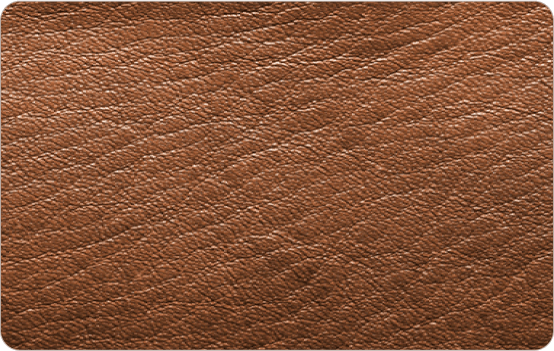
Polyurethane (PU)
PU is a favored synthetic material due to its durability, water resistance, and ability to look flawlessly like natural leather. This type of faux leather often has a shiny finish that looks incredibly stylish and is predominantly used in clothing.
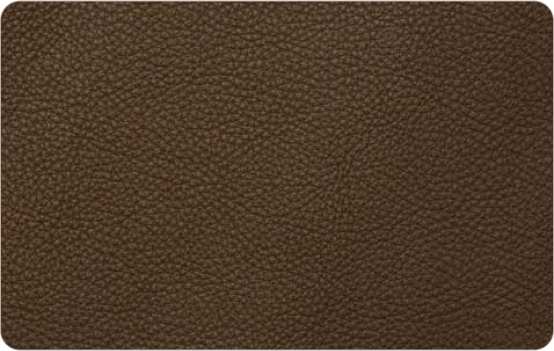
Polyvinyl Chloride (PVC)
PVC provides similar benefits to PU but, unfortunately, has harmful environmental impacts due to the chemicals used to produce it. PVC is a more durable material than PU, so it is often used for the likes of shoes and items subject to wear and tear.
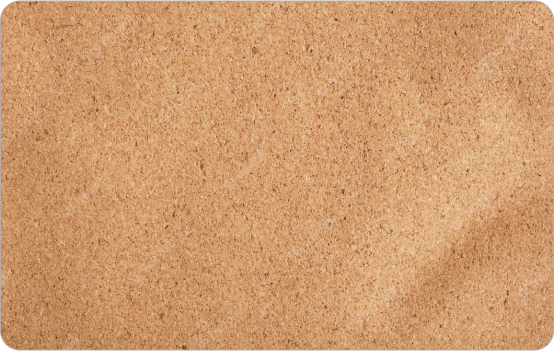
Cork
Cork is a lightweight, natural, and sustainable material derived from the bark of cork oak trees with a unique texture that helps it to stand out from alternatives. As being made from bark suggests, cork leather is exceptionally durable and can last a lifetime if looked after properly.
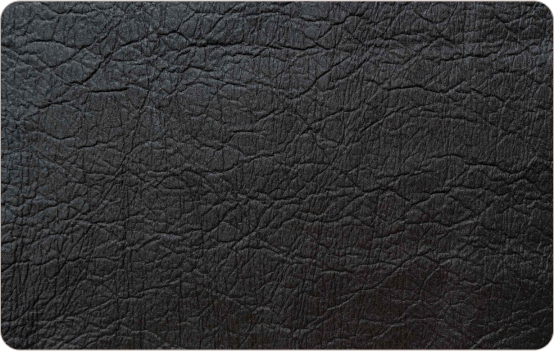
Pinatex
Made from pineapple leaves, pinatex is an eco-friendly material with both environmental and social benefits because it is a by-product of the pineapple industry, creating extra income for farmers and reducing waste. However, it isn’t biodegradable.
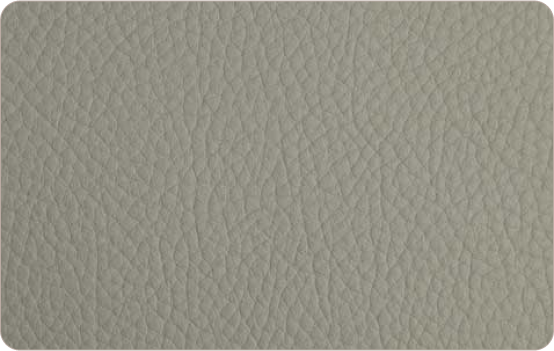
Mushroom leather
Mushroom leather is a recent addition to sustainable vegan leather materials and sees the mycelium root system of the mushroom used to replicate leather, providing a similar texture while being biodegradable and renewable.
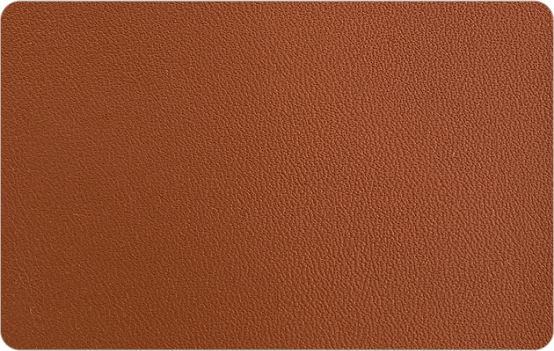
Apple leather
Apple leather is another material that helps to reduce waste, as the skin and leftover cores from the apple juicing process are used to make the leather. The finished result is biodegradable, water-resistant, and lightweight.
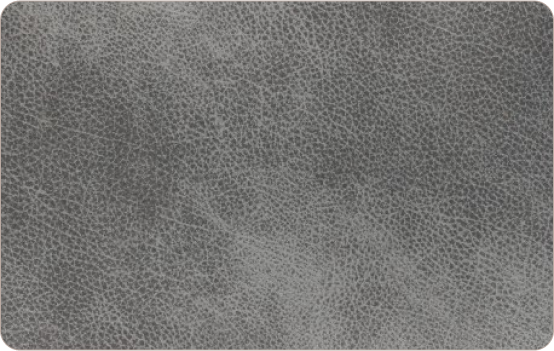
Recycled polyester
Made from recycled bottles, this eco-friendly option reduces waste and can be manipulated to look and feel just like genuine leather. This type of vegan leather can feel similar to PVC and PU due to the plastic involved in its creation, with less environmental harm included.
Benefits of
Vegan Leather
While some benefits of vegan leather may be obvious, this sustainable material holds many more advantages than you may initially consider. We’re all aware that genuine leather translates to harming animals, but does vegan leather provide other unrelated benefits? Let’s take a look at some of the most prominent benefits and why they are essential;
Benefits
Disadvantages of
Vegan Leather
Where there are advantages, there are bound to be some disadvantages too. To provide you with a level understanding of vegan leather, we will consider the potential downfalls of buying this type of leather instead of traditional;
Disadvantages
Environmental Impact of
Traditional Leather

Traditional leather production has a variety of environmental impacts.
It has been a significant topic of discussion for those trying to shop more consciously, both within the fashion industry and other industries.

To understand why vegan leather is becoming more popular, we must consider why traditional leather is becoming outdated. After all, vegan leather should be used to combat these disadvantages.
Below, we will detail the primary environmental impacts of traditional leather to be aware of;
Deforestation
Large amounts of land are required for livestock grazing and feed production, in which forests are made into pasture lands by clearing trees to make room for livestock.
As trees are removed for this production, the leather industry has become one of the leaders in deforestation, which has significant environmental impacts due to fewer trees absorbing carbon dioxide and releasing oxygen.
Deforestation in Colombia


Amazon rainforest fire in Brazil’s indigenous territory in 2017

Deforestation in Colombia

Amazon rainforest fire in Brazil’s indigenous territory in 2017


A polluted river draining chromium
Water pollution
Multiple chemicals are used during leather production, including the likes of chromium, which is used for tanning leather.
The chemicals used in this process can be highly harmful, pollute waterways, harm aquatic life, and potentially threaten those living nearby the production site.
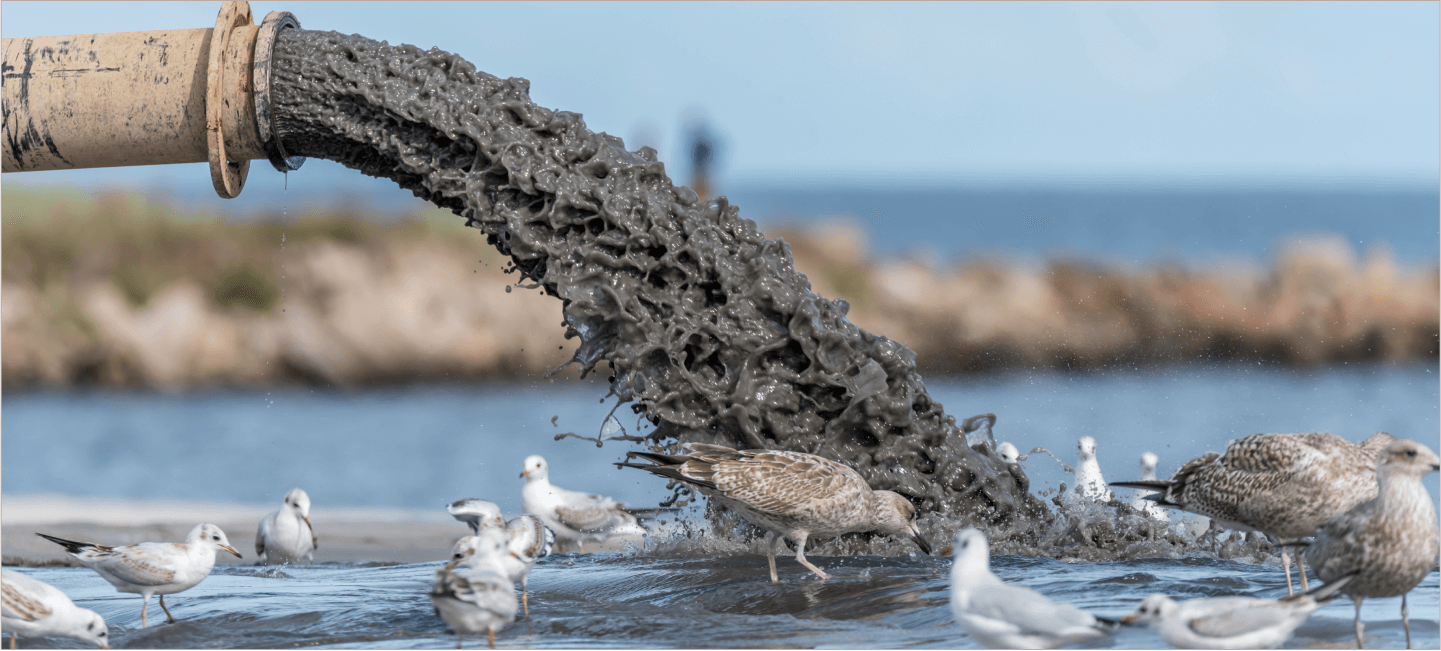
Greenhouse gas emissions
As leather production is part of the livestock industry, it contributes to greenhouse gas emissions. Large amounts of energy, such as fossil fuels, are required to manufacture leather, which contributes to climate change. As with any manufacturing process, there are several steps that must be completed, and regarding leather, each stage has a different environmental impact.

Power plant that is emitting the greenhouse gas carbon dioxide.

Over 200 types of chemicals and heavy metals must be used to tan leather.
For example, over 200 types of chemicals and heavy metals must be used to tan leather. These chemicals include the likes of arsenic and cyanide, which have been linked to causing cancer. Of course, vegan leather production will consist of some harmful chemicals, too (depending on the type of material), but far fewer than traditional leather.
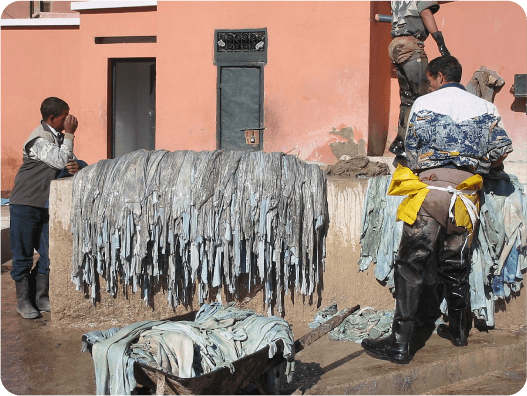
Tanned leather in Marrakesh
Waste
Due to how traditional leather is produced, animal by-products and toxic chemicals are wasted and can severely harm the environment if not disposed of properly.
Additionally, the chemicals used in the manufacturing process make leather non-biodegradable, further equating to more waste for our planet to accommodate.
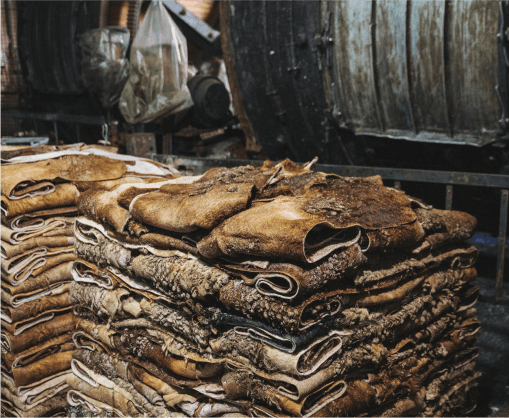
Pile of leather waste
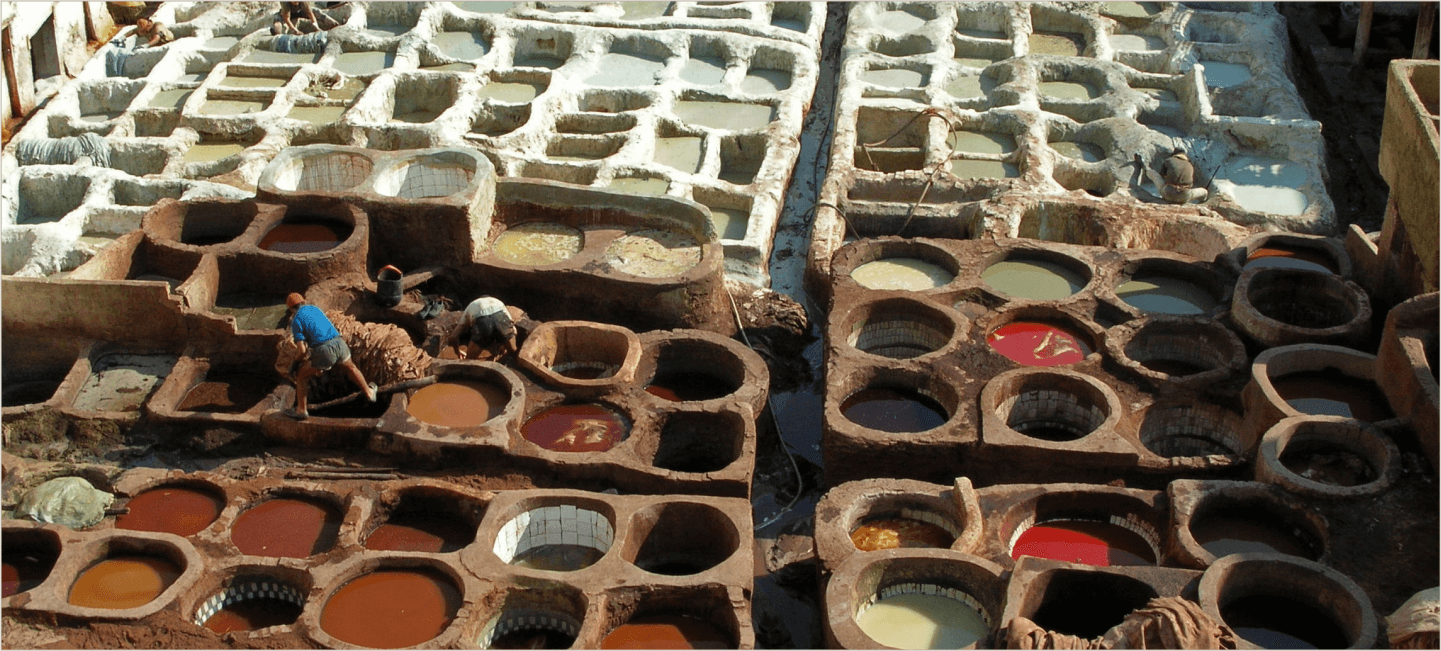
How Does Vegan Leather Differ From
The Impacts of
Traditional Leather?
Investing in vegan leather can be a great way to combat the above environmental impacts, providing a sustainable alternative for those wanting to be more eco-friendly.
Consumers get behind in using vegan leather for many reasons, from not using any animal by-products to saving energy. Here are some of the top reasons that vegan leather differs from real leather;
The Best Type of
Vegan Leather
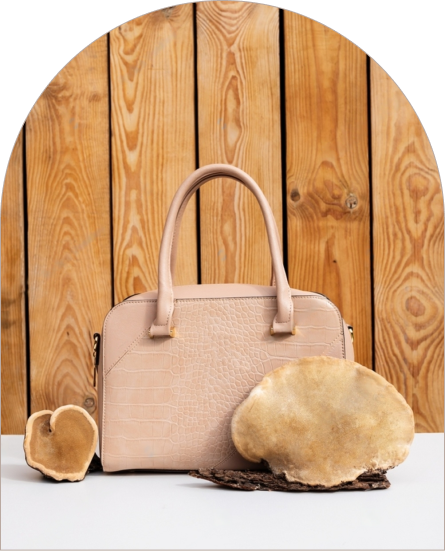
Earlier in our article, we covered several types of vegan leather that can be made from a multitude of materials, ranging from minimal environmental impact to having some harmful implications in their manufacturing process. If you’re particularly conscious of your carbon footprint, you may wonder which type of vegan leather is the best to invest in.
There isn’t a solid answer for the sole best type of vegan leather, but there are clear indications of which types are best.
Those that are made from repurposed materials are excellent and help to reduce waste, alongside biodegradable options that naturally break down when they no longer serve their purpose.
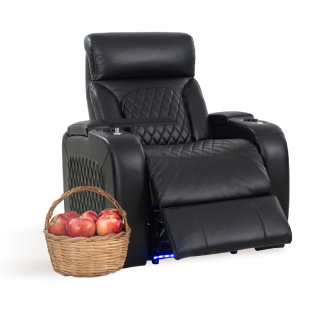
Mushroom and apple leather
Mushroom and apple leather both provide the above benefits, ensuring customers can enjoy excellent quality leather that is biodegradable while offering a similar texture and feel to real leather.
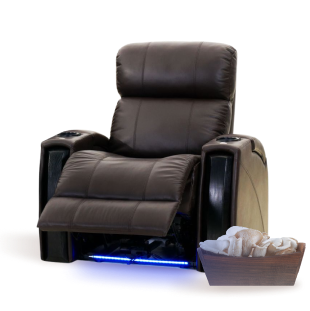
Cork And Pinatex
Other natural options, such as cork and pinatex, are excellent and eco-friendly but not biodegradable, like apple and mushroom leather.
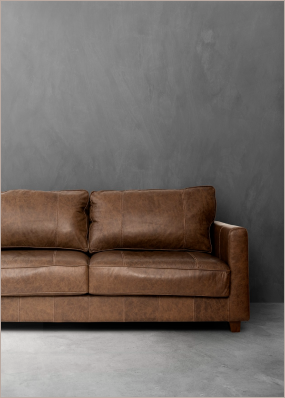
The reality is that any type of vegan leather on our list could work for you, and they all come with various benefits. However, for them to work the way you would like, you need to look after them and provide them with proper treatment that prolongs their life and durability.
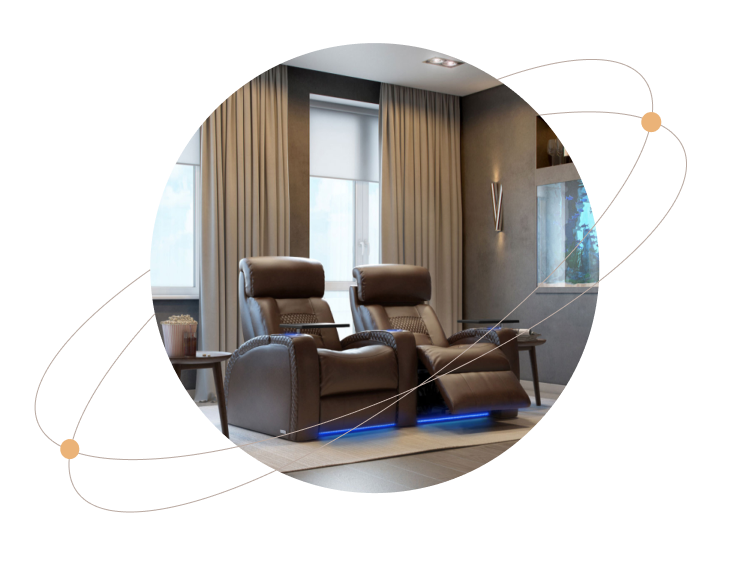
The Popularity of
Vegan Leather
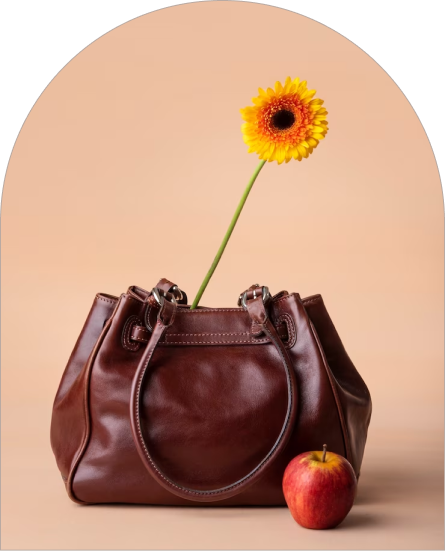
It seems unreal that only ten years ago, vegan leather was still somewhat taboo in many industries, as it is now at the forefront of many production lines and is continuously growing in popularity. The fashion industry is one of the industries most affected by this change, with
Both consumers and designers actively seeking sustainable and eco-friendly routes that include alternatives to much-loved materials such as traditional leather.

For smaller businesses, vegan leather offers a way to find cheaper alternatives to real life, ensuring designers can bring their ideas to life without harming animals and using high levels of their budget.
Additionally, establishing themselves as having vegan options is a great way to expand clientele, although transparency regarding these processes is essential.
Vegan Leather in the furniture industry
Over time, we have become more aware of traditional leather’s environmental and ethical concerns, making vegan leather alternatives more enticing to at least try. While vegan leather is trendy in the fashion industry, it is becoming more common in the furniture industry, too.
Most furniture companies now offer alternatives to sofas, chairs, and other everyday furniture items often crafted from traditional leather.
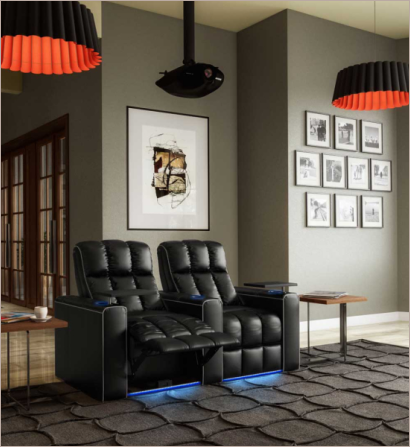
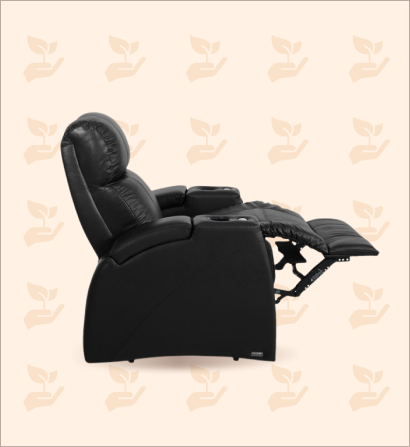
Positive Environmental Impacts
Replacing traditional leather furniture with vegan materials is a huge step and will significantly reduce traditional leather production. Slowing down this production will have positive environmental impacts, with less waste and lower greenhouse gasses being just some of these noticeable changes.
Versatile Vegan Leather
On the other hand,
Vegan leather furniture provides companies and designers with extended color palettes and textures, further showing how versatile leather alternatives can be despite being cheaper.

The environmental benefits of vegan leather go hand in hand with aesthetic benefits.
As awareness of climate change continues to grow, we can safely assume that vegan leather’s popularity will also increase.
Over time, if done correctly, using vegan alternatives to genuine leather could be a great stepping stone to a more sustainable future. Producing less waste, harming fewer animals, and using less energy are just a few ways in which this change could be monumental.
Vegan Leather
Furniture
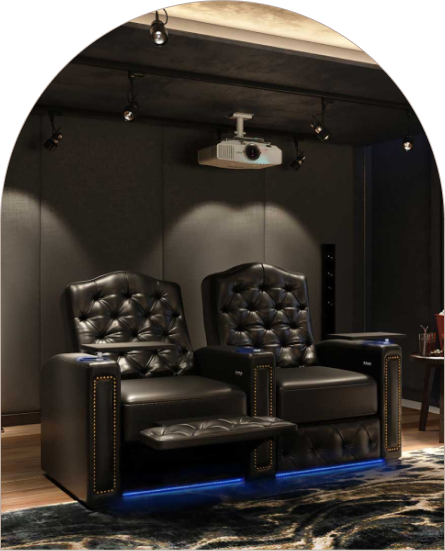
While some may have concerns regarding vegan leather furniture and its quality, many businesses are continuously proving that there is no need to worry about this. For instance, instead of vegan leather furniture using different designs that make the use of leather alternatives apparent,
Many businesses simply allow consumers to choose which fabric or material they would like for a specific design.
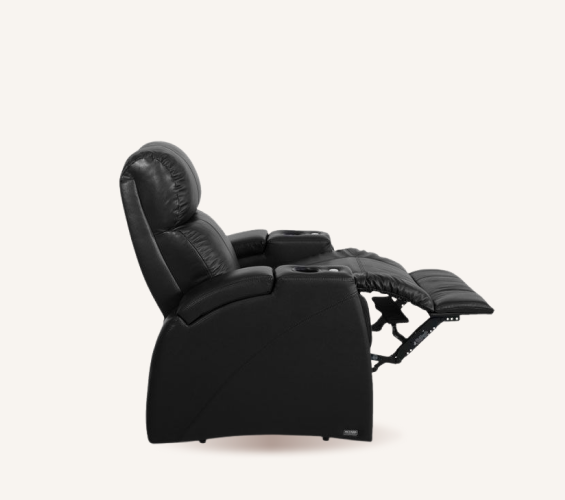
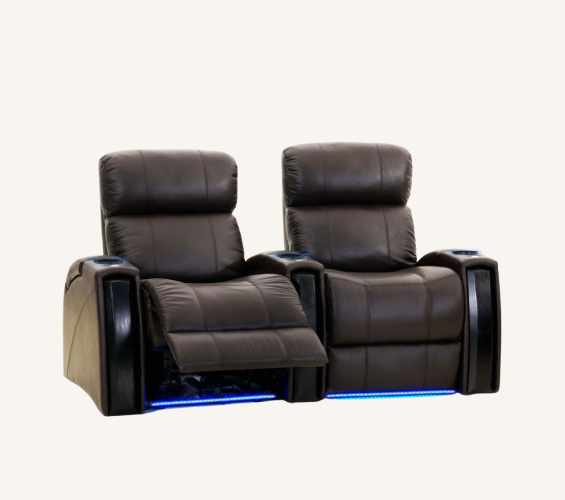
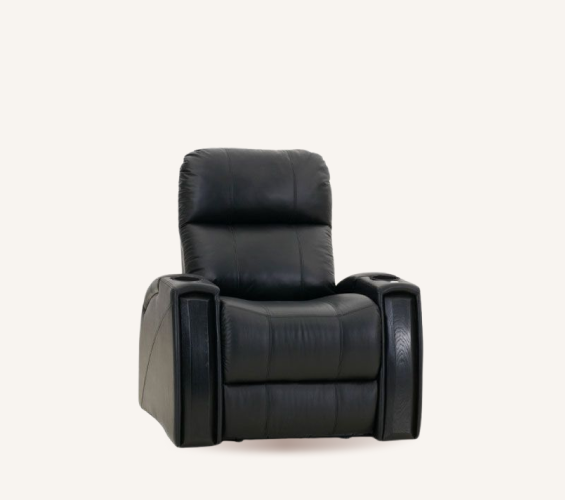

Nitro XL750
Take the Nitro XL750, for instance. This home theater seat design is available in Italian Luxe Leather, Bonded Leather, Microfiber, and Vegan Leather. No matter which material you choose, the same high quality is delivered.
Vegan leather provides a traditional leather-like finish without harming or using any animal by-products in its creation.
Colors In Vegan Leather
Another great element of the Nitro XL750 is that you can choose multiple colors in vegan leather, including classic midnight, classic grey, classic coffee, and classic cappuccino.





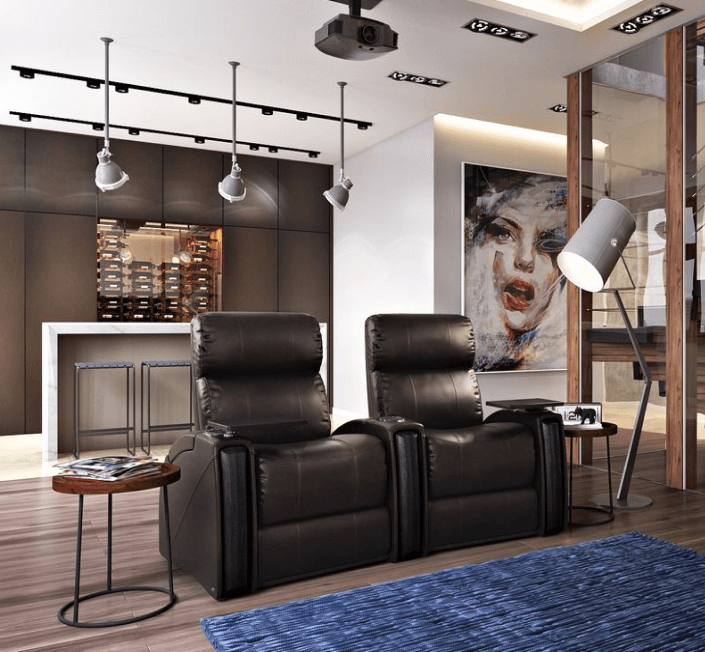
These beautiful shades are brought to life with high-density foam, gel-infused memory foam, and power recline features for the ultimate comforting seat that provides you with peace of mind that no animals were harmed in its creation.
Octane Custom Cuddle Chair
On the other hand, vegan leather furniture can be designed to provide an intriguing vision that elevates your space. The Octane Custom Cuddle Chair is a unique circular design that allows you to relax in style, with high-density foam providing comfort for your entire body and a reversible diamond stitch pillow for added support.
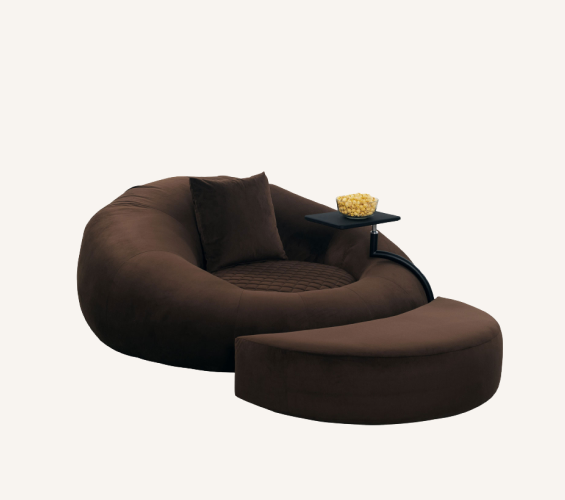
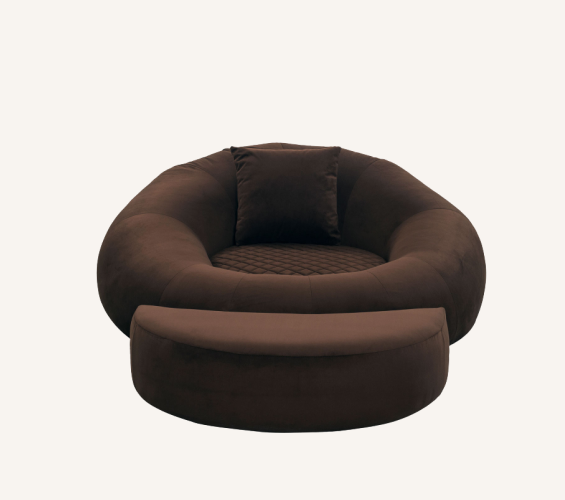
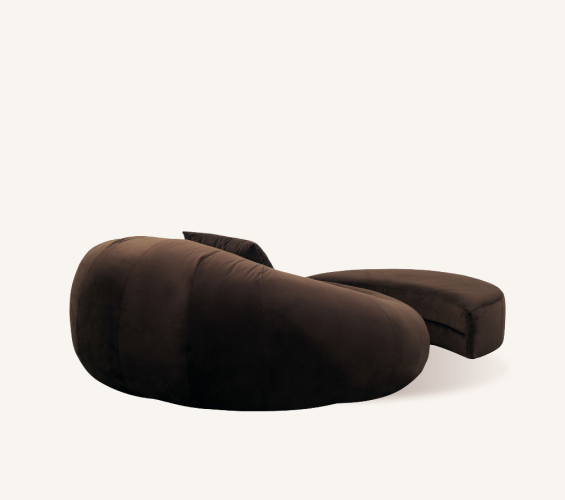
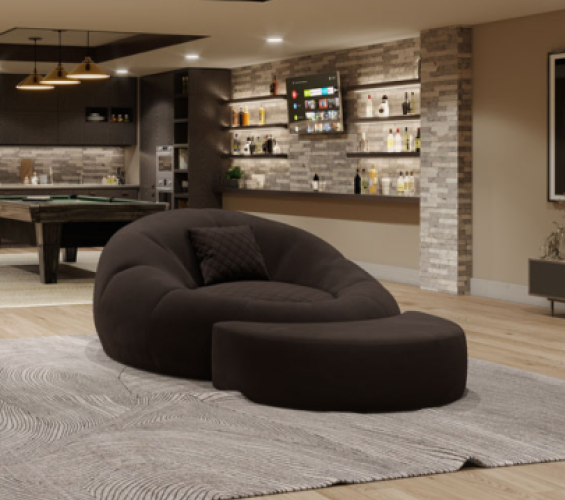
Customizable Features
Add a footrest ottoman and accessory stand for additional practicality and comfort in corresponding vegan leather material and shades; classic midnight, classic grey, classic coffee, and classic cappuccino. The cuddle chair presents how vegan furniture can stand out while offering customizable features.





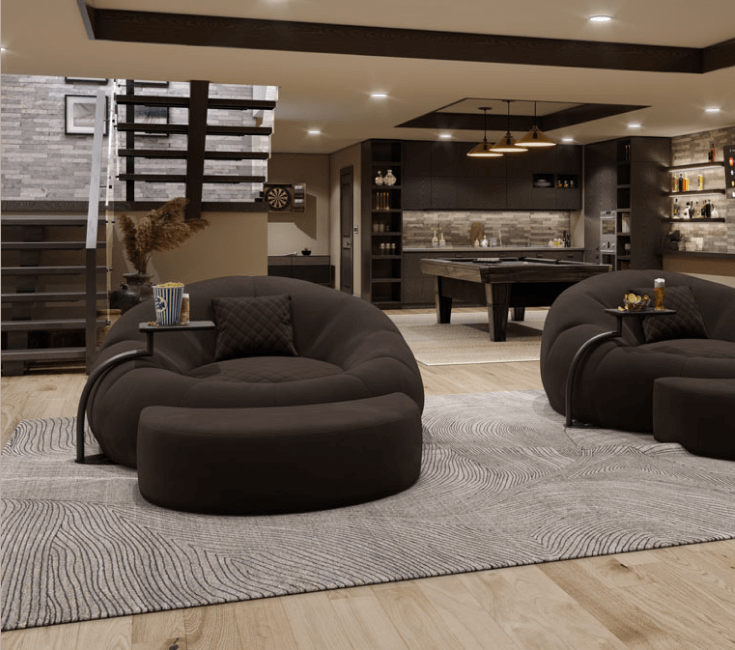
We recognize that everyone has different aims with the furniture they buy, whether they intend to improve space or need a more comfortable place to sit. While being vegan and buying products that don’t harm animals may be your top priority, it is helpful to try before you buy.
At The Theater Seat Store, you can receive a fabric swatch to see your upholstery in person before committing to buying an entire sofa.
We recommend doing this to ensure you select the right shade of vegan leather that suits your interiors and are happy with how your material looks and feels.
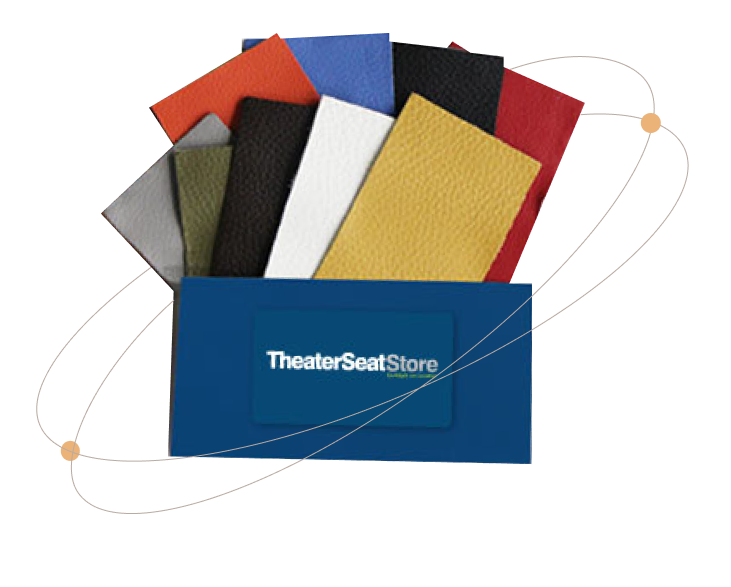
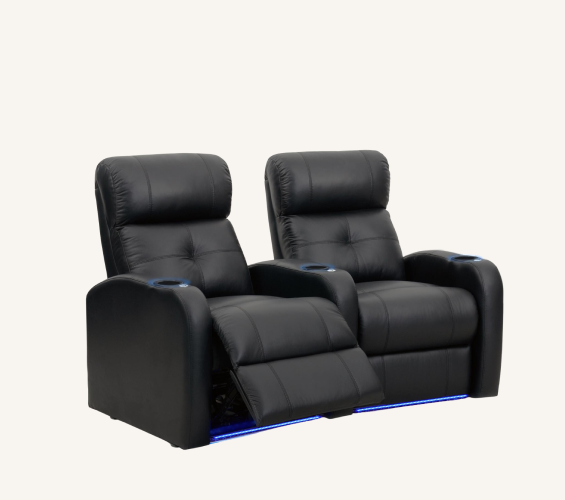
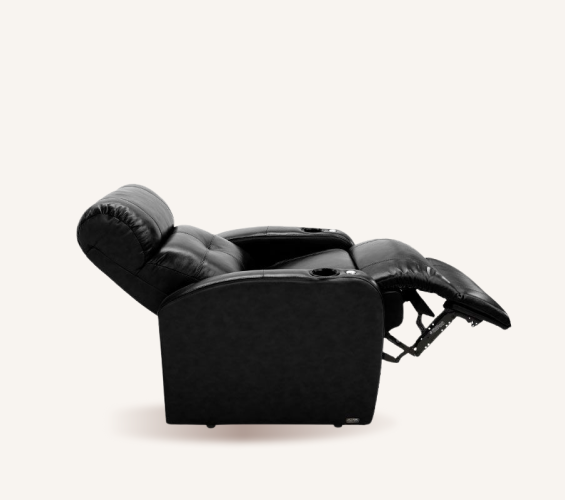
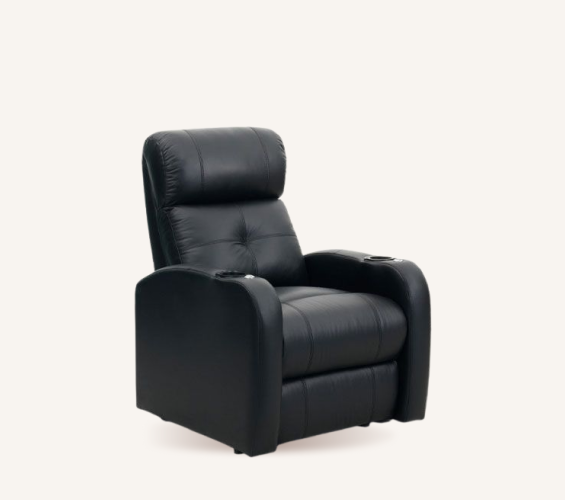

Octane Sonic XS900
No matter if you want vegan leather furniture to replicate home cinema seating or if you’re aiming to make your new home as sustainable as possible, there are plenty of options available out there for you to try out. Our range includes the likes of the Octane Sonic XS900, a small recliner made from vegan leather with a tufted seat back, providing both comfort and aesthetic value.
How to Care for
Vegan Leather
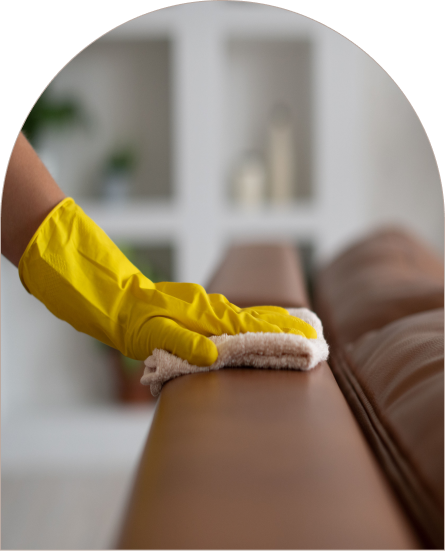
A massive benefit of buying vegan leather instead of traditional leather is that it is pretty easy to care for and doesn’t require the same level of maintenance.
Traditional leather requires care to prevent it from cracking and aging, which can become costly. Still, caring for your vegan leather furniture or clothing will help to prolong its quality, and we recommend using the following tips to do so;
.
Conclusion
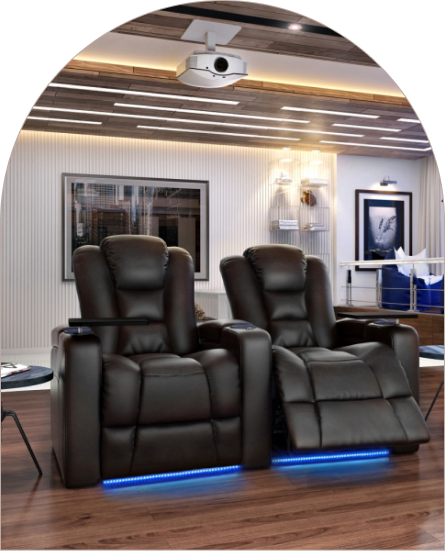
While vegan leather has a few disadvantages, the benefits of investing in this type of material far outweigh any negatives and can help to reduce the harmful environmental impacts that genuine traditional leather can have.
Thankfully, with awareness becoming more apparent regarding these negative impacts, sustainable materials such as vegan leather are becoming more popular and easy to purchase.

Fashion and furniture designers are consistently using vegan leather to make their collections more appealing to a range of customers,
Ensuring vegans, those aiming to be more sustainable, or even those who have never tried faux leather can get their hands on their favorite designs in a vegan version.
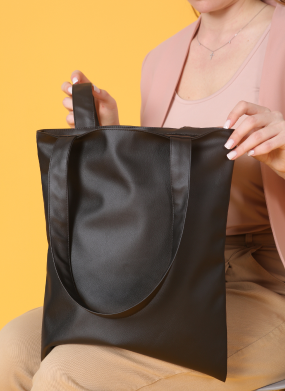
Having more diverse collections doesn’t only help the environment but ensures misconceptions regarding vegan alternatives are eradicated.
Many customers may feel vegan materials don’t have the same quality as real leather, and while in some cases this has been true, high-quality vegan leather is becoming more common and easy to find.
After all, the idea of vegan leather is to replicate the real thing, so it’s important to remember it will likely have some differences but can still provide an excellent, durable alternative.
With the amount of energy and waste required to produce vegan leather being significantly less than the traditional alternative, it’s apparent that we can make monumental environmental changes when switching to vegan alternatives. However, being mindful of which vegan materials are best is essential, with the likes of PU still causing environmental harm due to its production and disposal.
Vegan alternatives made of plastic
may not require as much water to manufacture as traditional leather, but how these materials are disposed of and produced can significantly harm the environment. Therefore, if your priority is being more sustainable, selecting vegan leather not made from plastic is your best option.
Natural materials such as cork, pinatex, and mushroom leather
are the most eco-friendly types of vegan leather to consider. These sustainable options are usually biodegradable and more straightforward to dispose of than plastics and genuine leather, eliminating the chances of buying into greenwashing campaigns and alternatives that are less sustainable than they claim.

Although greenwashing is more prevalent in the fashion industry, it is common for businesses not to provide sufficient information regarding how sustainable their materials genuinely are.
It is easy to claim to be eco-friendly and use animal-friendly materials. However, if these materials aren’t paired with proper working conditions and sustainable manufacturing techniques, claims of being vegan are invalid and unreliable.
Therefore, gaining knowledge and insight into the world of sustainability is one of the most empowering ways to understand how to incorporate eco-friendly materials, such as vegan leather, into your life.
Read about the companies you purchase from, ask questions about their processes, ad make sure you’re happy with the information provided before making a purchase.

Our tips and tricks for looking after vegan leather should help you to get the most out of your vegan leather goods, ensuring you can adequately care for the items you purchase and leverage their durability. After all, to truly act sustainably, you need to look after the materials you own to prevent their disposal and repurchasing.
What is vegan leather?
Vegan leather, also known as faux leather or synthetic leather, is a type of material that is designed to mimic the look and feel of real leather but is made without using any animal products.
What is vegan leather made of?
Vegan leather, also known as faux leather or synthetic leather, is typically made from materials such as polyvinyl chloride (PVC) or polyurethane (PU). These materials are chosen as alternatives to traditional leather derived from animal hides, making it a cruelty-free and more sustainable option for those who choose to avoid animal products. Additionally, some vegan leathers are made from natural materials like cork or pineapple fibers, providing even more eco-friendly alternatives.
What are vegan leather benefits?
Vegan leather has benefits compared to traditional leather. It is cruelty-free and aligns with vegan principles. It is often more environmentally friendly and made from synthetic or plant-based materials. It reduces demand for animal farming, which contributes to deforestation and greenhouse gases. Vegan leather is also affordable and versatile in design, accessible to more consumers.
What are the disadvantages of vegan leather?
There are disadvantages to vegan leather. It doesn’t last as long as genuine leather and wears out faster. The manufacturing of synthetic materials used in vegan leather has a higher environmental impact. It also uses petroleum-based products, which depletes fossil fuels. Vegan leather may not have the luxurious feel and texture of genuine leather, which may not appeal to those looking for a high-end aesthetic.
Is vegan leather durable?
Yes, vegan leather can be durable depending on the quality and manufacturing process. Many companies are now producing vegan leather that is designed to be just as durable as traditional leather. However, it is important to note that not all vegan leather products are created equal, and some may not be as durable as others. It is always recommended to do research and read reviews before purchasing vegan leather products to ensure their durability.
How to care for vegan leather?
- Vegan leather can be cared for by wiping it with a damp cloth to remove any dirt or stains.
- Avoid using harsh chemicals or abrasive materials that can damage the surface of the vegan leather.
- It is recommended to store vegan leather items in a cool and dry place to prevent cracking or discoloration.
- Regularly applying a leather conditioner specifically designed for vegan leather can help maintain its softness and prevent drying out.
How to repair vegan leather?
- Clean the vegan leather with a mild soap and water solution.
- Use a specialized vegan leather cleaner or conditioner to restore its shine and softness.
- For minor scratches or scuffs, gently rub the affected area with a microfiber cloth or a soft brush.
- If there are larger tears or damages, consider using a vegan leather repair kit or consult a professional for assistance.
Can vegan leather rival the quality of the real thing?
Yes, vegan leather can rival real leather in quality. It looks, feels, and lasts like real leather. Vegan leather is also more sustainable and cruelty-free, making it attractive to environmentally conscious consumers. As the demand for vegan products grows, manufacturers are improving vegan leather to compete with real leather.
Is vegan leather more sustainable than real leather?
There are reasons why vegan leather is seen as more sustainable than real leather. Real leather production uses animal hides, leading to deforestation, greenhouse gas emissions, and water pollution. Vegan leather, on the other hand, is usually made from synthetic materials or recycled plastics, which reduces its environmental impact. It also requires fewer resources and energy compared to real leather. However, the sustainability of vegan leather can vary depending on the manufacturing processes and materials used.
Is vegan leather just synthetic leather?
Vegan leather is not just synthetic leather. It is any material used as an alternative to traditional leather made from animals. Synthetic leather is one type of vegan leather, but there are also plant-based materials like pineapple leaves or mushroom leather. Vegan leather provides a cruelty-free and sustainable option for those avoiding animal products.


